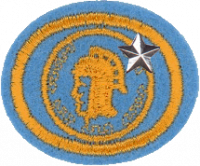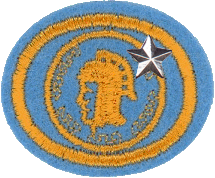AY Honor Currency - Advanced Answer Key for Canada used by General Conference
1
For tips and instruction see Currency.
Countries usually present symbols and themes on their currency that have important historical, cultural or nationalist significance. There is no end to the possibilities in your coin and currency collection so pick something interesting to talk about. Canadian currency in particular has included many interesting images over the various series and designs, but you are not limited to only Canadian examples in this requirement. Wow your Pathfinder Club!
Counterfeiting money is of course illegal. Specifically in Canada, Part XII of the Criminal Code of Canada covers "Offences Relating to Currency” and are repeated below:
Making Counterfeit Money
Section 449. Every one who makes or begins to make counterfeit money is guilty of an indictable offence and liable to imprisonment for a term not exceeding fourteen years.
Trafficking in Counterfeit Money
Section 450. Every one who, without lawful justification or excuse, the proof of which lies on him,
(a) buys, receives or offers to buy or receive,
(b) has in his custody or possession, or
(c) introduces into Canada,
counterfeit money is guilty of an indictable offence and liable to imprisonment for a term not exceeding fourteen years.
Uttering counterfeit money
Section 452. Every one who, without lawful justification or excuse, the proof of which lies on him,
(a) utters or offers to utter counterfeit money or uses counterfeit money as if it were genuine, or
(b) exports, sends or takes counterfeit money out of Canada,
is guilty of an indictable offence and liable to imprisonment for a term not exceeding fourteen years.. Source
Indictable offences are some of the most serious criminal offences. Penalties range from fines to a maximum of 14 years in Federal Prison.
More details on Canadian Counterfeiting Law
All Canadian Police are responsible for enforcing the Criminal Code. Unlike the United States Secret Service, Canada does not have an agency with counterfeiting as a primary focus.
Canadian circulation coins have distinct metallic compositions that can be measured. Coin counters at banks, vending machines and coin handling equipment used by armoured car firms all rely on the metallic signature of Canadian coins to sift out fakes. These can also be programmed to sift out American coins, even though retailers, banks and many vending machines in Canada will usually accept American coins at par.
In 2012 RCM introduced new security features to the $1 and $2 coins:
- patented multi-ply plated steel technology
- laser mark micro-engraving
- the two-dollar coin was updated with a virtual image and edge lettering. [1]
The cost and effort to counterfeit low value Canadian coins is not worth the reward, but Silver, Gold, Platinum and Platinum Bullion coins and bars are a whole different problem. The Royal Canadian Mint (RCM) has a long history of introducing anti counterfeiting features into both physical bullion and packaging. Some recent examples include:
- Bullion Coin DNA Anti-Counterfeiting Technology, a proprietary security technology that facilitates the authentication of Gold Maple Leaf coins dated 2014 and later, and Silver Maple Leaf coins dated 2015 and later. The patented Signoptic® technology was jointly developed by the Royal Canadian Mint and Arjo Solutions to give investors greater peace of mind by allowing each bullion coin’s security mark to be matched to the Royal Canadian Mint database.
- Radial Lines, introduced in 2014, are precisely machined to within microns. The uniqueness of the line width and pitch create a light-diffracting pattern specific to each coin.
- Micro-Engraved Security Marks on Canadian silver and gold bullion coins feature a textured maple leaf micro-engraved with laser technology to be visible only under magnification. Etched within this maple leaf are two digits indicating the coin’s production year. For Silver coins this started in 2014.
- Gold bars have serial numbers and assay certificates as well as intricate designs and markings that serve as security features. These include the RCM logo, the maple leaf emblem, and text inscriptions indicating the bar's weight and purity.
- Coins and bars packaged in assay cards include additional security features on the packaging.
- The general very high quality manufacturing standards and quality control at RCM have long discouraged counterfeiting.
“Paper” money in Canada is no longer made of paper but instead a polymer material since 2012. These notes last 2.5 times longer than paper and contain a variety of security features.
For teaching we suggest printing this fact sheet Bank of Canada Polymer Note Fact Sheet and comparing physical bank notes with it.
Counterfeiting experts empathize studying genuine currency rather than spending too much time looking at counterfeit currency. When you really understand what the genuine looks like the fake stands out immediately.
The same principle holds true for spiritual topics. Study God’s word carefully and you will quickly be able to spot error when you read it in other writings or see it in presentations.
4
- a. Level of expertise of members as demonstrated by presentations and dialogues.
- b. Average general age of attendees.
- c. Ideas which might help the club extend its collector interest to a wider audience.
- d. How newcomer friendly is the organization.
- e. Suggestions on how these people might be reached with the gospel through a manner which they would find attractive.
Coin and currency collecting has declined in popularity over the decades but still attracts young people. This may be linked to the ever growing popularity of electronic currency (credit and debit cards, etransfer, etc). People are more interested in their smart phones than a hobby collecting physical objects related to history, geography, metallurgy, finance and art.
Since we know coin collectors are interested in history and money, would they be interested in presentations about Biblical Archaeology, Coins of the Bible, applying Biblical principles to personal finance and similar topics. These types of seminars can be used to bring people to Jesus.
Personal friendships are far more effective than media advertising for getting people in the doors of a church. How can you build friendships with the unreached through hobbies like coins?
5
6
Requirement 1 reproduced below for simplicity
- 1. Relate briefly the story of barter, showing three reasons why money came into being and naming at least ten strange forms of money used in place of coins or currency.
Note you don’t have to write the paragraph (but you certainly can). Just go do a little research and be prepared to show your instructor what you found.
References


